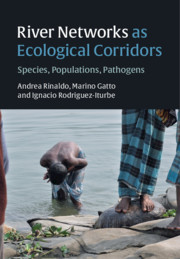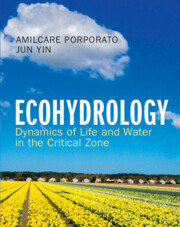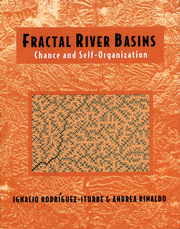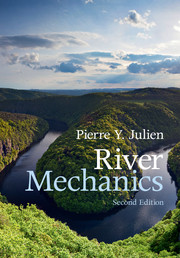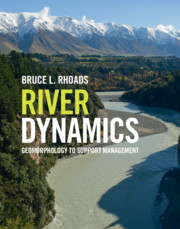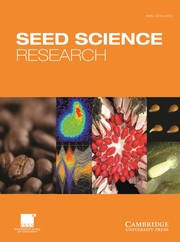River Networks as Ecological Corridors
River networks are critically important ecosystems. This interdisciplinary book provides an integrated ecohydrological framework blending laboratory, field, and theoretical evidence that changes our understanding of river networks as ecological corridors. It describes how the physical structure of the river environment impacts biodiversity, species invasions, population dynamics, and the spread of waterborne disease. State-of-the-art research on the ecological roles of the structure of river networks is summarized, including important studies on the spread and control of waterborne diseases, biodiversity loss due to water resource management, and invasions by non-native species. Practical implications of this research are illustrated with numerous examples throughout. This is an invaluable go-to reference for graduate students and researchers interested in river ecology and hydrology, and the links between the two. Describing new related research on spatially-explicit modeling of the spread of waterborne disease, this book will also be of great interest to epidemiologists and public health managers.
- Introduces the theory step-by-step, using ordinary language, examples, and case studies throughout, accelerating to complex theoretical derivations, without the need for prior knowledge
- Includes inter-disciplinary and multi-disciplinary perspectives, showing how the different disciplines of hydrology, ecology and epidemiology interact
- Establishes new ground for ecohydrology by formulating and solving a number of water-controlled ecological problems in a coherent framework
- Suggests new avenues for research and recommends further open-source reading
Awards
Winner, 2021 PROSE Award - Environmental Science, Association of American Publishers
Reviews & endorsements
'A banquet of theoretical rigor, disciplinary integration, and insightful applications. Starting from a clear demonstration of the link between biodiversity patterns and processes to the physical template of our planet, and specifically river networks, the authors unleash a tour de force ranging from neutral theory to the spread of humans and pandemics to species invasions and biodiversity loss. Remarkable!' Pablo Marquet, Pontifical Catholic University of Chile
'This book is a brilliant marriage of theoretical and empirical exposition, and the most comprehensive integration available of the ecology and geomorphology of fluvial systems. The volume builds original exploration of some of the most fundamental issues in ecological theory upon an authoritative presentation of the mathematical foundations. The authors are unmatched in their expertise and scholarship in the subject, and the current volume is a magnificent capstone to their remarkable individual and collaborative contributions.' Simon A. Levin, Department of Ecology and Evolutionary Biology, Princeton University
'This monumental book is a wonderful corridor to 'run' through one of the most fascinating frontiers of research, the one linking water, landscapes, ecosystems, and societies. These important topics, here analyzed with the elegant tools of dynamical systems and statistical physics and with attention to field and laboratory observations, will inspire a new generation of environmental scientists.' Amilcare Porporato, Department of Civil and Environmental Engineering, Princeton University
'This novel approach takes ecohydrology into new territory. With a rich mixture of theory and practical science from both the field and the laboratory, the authors demonstrate how hydrological connectivity in the fluvial network provides the basis for an understanding of biodiversity, migration and the spread of disease in river systems. Spanning the widest range from the molecular via ecosystems to the world's largest river basins, the authors have assembled a broad research field into a single book that will excite and challenge students and researchers for a generation to come.' Tim Burt, Durham University
'This is the most insightful and powerful analysis of how river networks shape the complex ecological function of riparian corridors through controls on species dispersal, biological invasions, biodiversity patterns, and waterborne disease epidemics. A truly exceptional, comprehensive, and transformative account of theories, experiments, and applications with a wealth of new ideas. This is certain to become the most authoritative, inspiring, and illuminating book of reference in riparian ecohydrology!' Paolo D'Odorico, University of California, Berkeley
'… [an] innovative work … an in-depth look at the importance of riverine networks as corridors for the movement of various ecological conditions and populations.' K. R. Thompson, Choice
Product details
No date availableHardback
9781108477826
454 pages
260 × 183 × 26 mm
1.07kg
68 b/w illus. 129 colour illus.
Table of Contents
- Preface
- Acknowledgments
- 1. Introduction
- 2. Species
- 3. Populations
- 4. Waterborne disease
- 5. Afterthoughts and outlook
- Appendix A. Stability of dynamical systems and bifurcation analysis
- Appendix B. Optimal channel networks and geomorphological statistical mechanics
- Appendix C. Computational tools for waterborne disease spread
- References
- Index.

